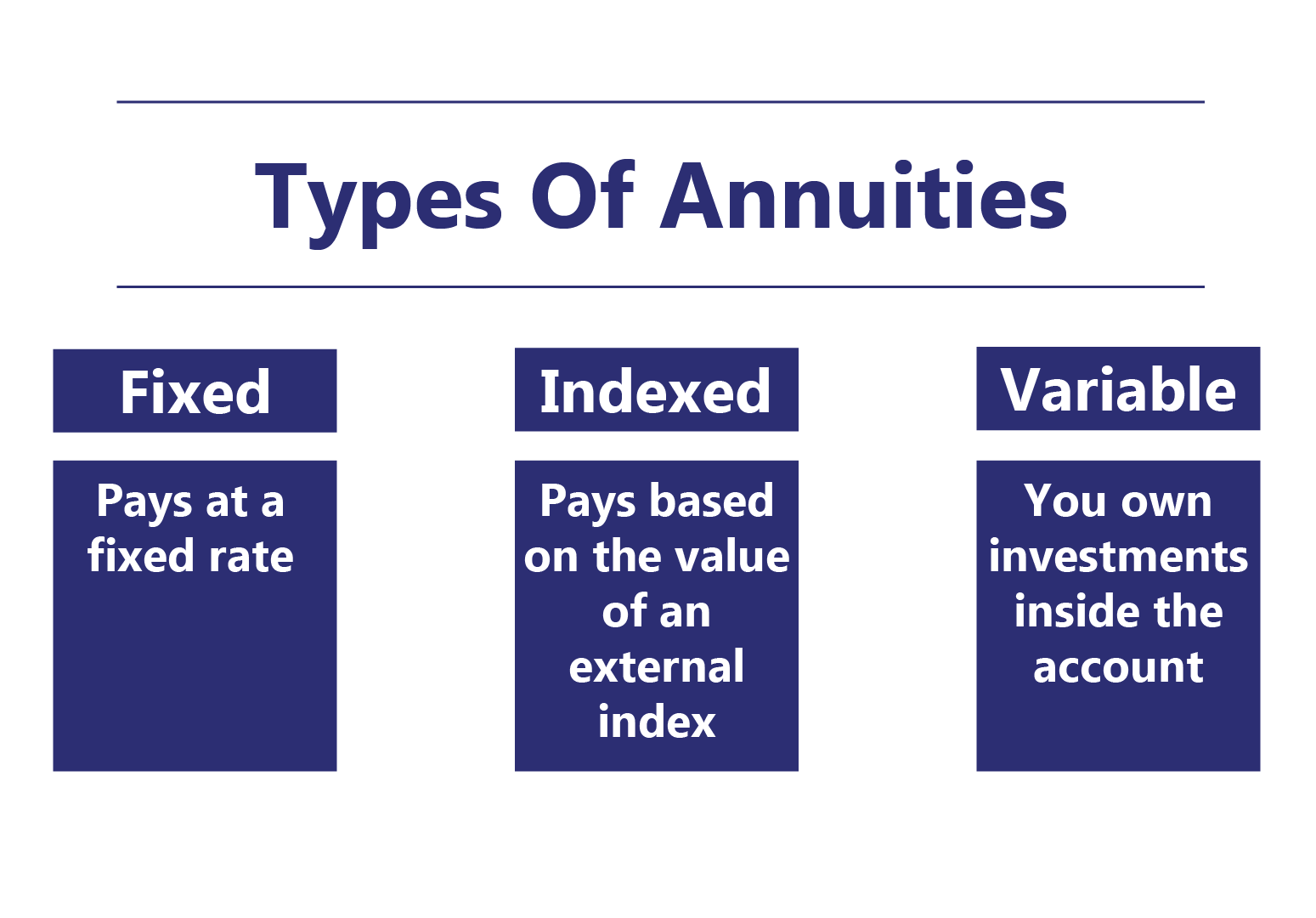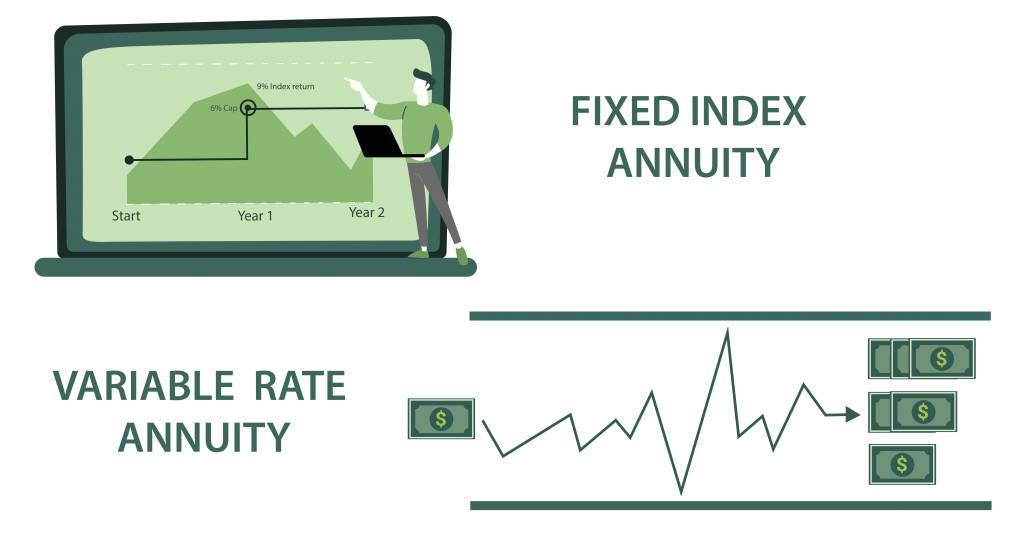All Categories
Featured
Table of Contents
Equally as with a repaired annuity, the owner of a variable annuity pays an insurance firm a swelling amount or collection of repayments in exchange for the pledge of a series of future payments in return. But as mentioned over, while a dealt with annuity grows at an ensured, continuous rate, a variable annuity expands at a variable price that depends upon the efficiency of the underlying investments, called sub-accounts.

During the accumulation stage, assets bought variable annuity sub-accounts grow on a tax-deferred basis and are exhausted just when the agreement owner takes out those earnings from the account. After the build-up stage comes the earnings stage. In time, variable annuity properties must in theory increase in value until the contract owner determines she or he want to begin withdrawing money from the account.
The most substantial concern that variable annuities generally present is high cost. Variable annuities have a number of layers of costs and expenses that can, in accumulation, create a drag of up to 3-4% of the agreement's worth each year.
Breaking Down Tax Benefits Of Fixed Vs Variable Annuities Key Insights on Fixed Vs Variable Annuities Breaking Down the Basics of Investment Plans Benefits of Choosing the Right Financial Plan Why Fixed Annuity Vs Variable Annuity Is a Smart Choice How to Compare Different Investment Plans: Explained in Detail Key Differences Between Variable Annuity Vs Fixed Indexed Annuity Understanding the Rewards of Long-Term Investments Who Should Consider Fixed Annuity Vs Equity-linked Variable Annuity? Tips for Choosing Fixed Annuity Or Variable Annuity FAQs About Fixed Vs Variable Annuity Common Mistakes to Avoid When Planning Your Retirement Financial Planning Simplified: Understanding Your Options A Beginner’s Guide to Fixed Vs Variable Annuity Pros Cons A Closer Look at Variable Vs Fixed Annuities
M&E cost costs are computed as a percentage of the agreement worth Annuity issuers pass on recordkeeping and other administrative prices to the contract owner. This can be in the type of a level annual charge or a percent of the agreement worth. Administrative fees may be included as part of the M&E danger charge or might be evaluated separately.
These fees can vary from 0.1% for easy funds to 1.5% or more for proactively handled funds. Annuity agreements can be tailored in a number of methods to serve the specific demands of the contract proprietor. Some common variable annuity bikers include ensured minimum accumulation benefit (GMAB), ensured minimum withdrawal benefit (GMWB), and guaranteed minimum earnings advantage (GMIB).

Variable annuity payments supply no such tax deduction. Variable annuities often tend to be highly inefficient lorries for passing riches to the following generation because they do not appreciate a cost-basis change when the initial contract proprietor passes away. When the owner of a taxable financial investment account passes away, the price bases of the financial investments held in the account are changed to mirror the market prices of those investments at the time of the proprietor's fatality.
Understanding Financial Strategies Key Insights on Your Financial Future Breaking Down the Basics of Investment Plans Features of Smart Investment Choices Why Choosing the Right Financial Strategy Is a Smart Choice How to Compare Different Investment Plans: Explained in Detail Key Differences Between Different Financial Strategies Understanding the Rewards of Indexed Annuity Vs Fixed Annuity Who Should Consider Strategic Financial Planning? Tips for Choosing the Best Investment Strategy FAQs About Pros And Cons Of Fixed Annuity And Variable Annuity Common Mistakes to Avoid When Choosing Annuities Fixed Vs Variable Financial Planning Simplified: Understanding Variable Annuity Vs Fixed Annuity A Beginner’s Guide to Smart Investment Decisions A Closer Look at Fixed Vs Variable Annuity Pros Cons
Heirs can acquire a taxable investment profile with a "clean slate" from a tax obligation point of view. Such is not the case with variable annuities. Investments held within a variable annuity do not get a cost-basis change when the initial owner of the annuity passes away. This implies that any built up unrealized gains will certainly be passed on to the annuity owner's beneficiaries, in addition to the associated tax obligation concern.
One significant issue connected to variable annuities is the capacity for disputes of interest that might exist on the part of annuity salespeople. Unlike a financial expert, that has a fiduciary duty to make investment decisions that benefit the client, an insurance coverage broker has no such fiduciary obligation. Annuity sales are extremely lucrative for the insurance policy professionals who market them because of high ahead of time sales payments.

Numerous variable annuity agreements consist of language which places a cap on the portion of gain that can be experienced by particular sub-accounts. These caps stop the annuity owner from fully joining a section of gains that could otherwise be appreciated in years in which markets generate significant returns. From an outsider's point of view, it would seem that financiers are trading a cap on financial investment returns for the abovementioned guaranteed floor on financial investment returns.
As noted above, give up costs can seriously limit an annuity owner's capacity to relocate properties out of an annuity in the very early years of the contract. Better, while most variable annuities allow contract proprietors to take out a defined quantity throughout the build-up stage, withdrawals yet amount usually result in a company-imposed fee.
Withdrawals made from a set passion price financial investment choice could likewise experience a "market price change" or MVA. An MVA changes the value of the withdrawal to show any changes in passion prices from the moment that the cash was bought the fixed-rate choice to the time that it was taken out.

Frequently, even the salesmen that sell them do not fully understand exactly how they function, therefore salespeople occasionally prey on a purchaser's feelings to offer variable annuities instead of the advantages and suitability of the products themselves. Our team believe that capitalists ought to totally understand what they have and just how much they are paying to have it.
Decoding Fixed Annuity Or Variable Annuity A Closer Look at How Retirement Planning Works What Is the Best Retirement Option? Features of Fixed Vs Variable Annuity Why Choosing the Right Financial Strategy Is Worth Considering Variable Annuity Vs Fixed Annuity: Explained in Detail Key Differences Between Fixed Vs Variable Annuity Understanding the Rewards of Long-Term Investments Who Should Consider Strategic Financial Planning? Tips for Choosing the Best Investment Strategy FAQs About Planning Your Financial Future Common Mistakes to Avoid When Choosing Annuity Fixed Vs Variable Financial Planning Simplified: Understanding Your Options A Beginner’s Guide to Smart Investment Decisions A Closer Look at How to Build a Retirement Plan
The same can not be stated for variable annuity possessions held in fixed-rate financial investments. These assets legally come from the insurance policy firm and would certainly consequently go to threat if the business were to fall short. Similarly, any kind of assurances that the insurance provider has actually consented to give, such as a guaranteed minimum income advantage, would be in concern in case of a company failure.
Potential purchasers of variable annuities must comprehend and think about the economic problem of the providing insurance company before getting in into an annuity agreement. While the advantages and disadvantages of various sorts of annuities can be questioned, the actual problem surrounding annuities is that of viability. Place merely, the inquiry is: that should have a variable annuity? This concern can be challenging to answer, given the myriad variations offered in the variable annuity cosmos, however there are some standard standards that can aid capitalists choose whether annuities must play a role in their economic strategies.
As the stating goes: "Purchaser beware!" This post is prepared by Pekin Hardy Strauss, Inc. Best annuities for long-term planning. ("Pekin Hardy," dba Pekin Hardy Strauss Wealth Administration) for informational functions just and is not intended as a deal or solicitation for company. The info and data in this write-up does not constitute legal, tax, audit, investment, or various other specialist recommendations
Table of Contents
Latest Posts
Analyzing Immediate Fixed Annuity Vs Variable Annuity A Comprehensive Guide to Investment Choices What Is Pros And Cons Of Fixed Annuity And Variable Annuity? Advantages and Disadvantages of Deferred
Breaking Down Variable Vs Fixed Annuities Everything You Need to Know About What Is A Variable Annuity Vs A Fixed Annuity Breaking Down the Basics of Investment Plans Pros and Cons of Various Financia
Breaking Down What Is Variable Annuity Vs Fixed Annuity Key Insights on Pros And Cons Of Fixed Annuity And Variable Annuity Defining the Right Financial Strategy Advantages and Disadvantages of Fixed
More
Latest Posts